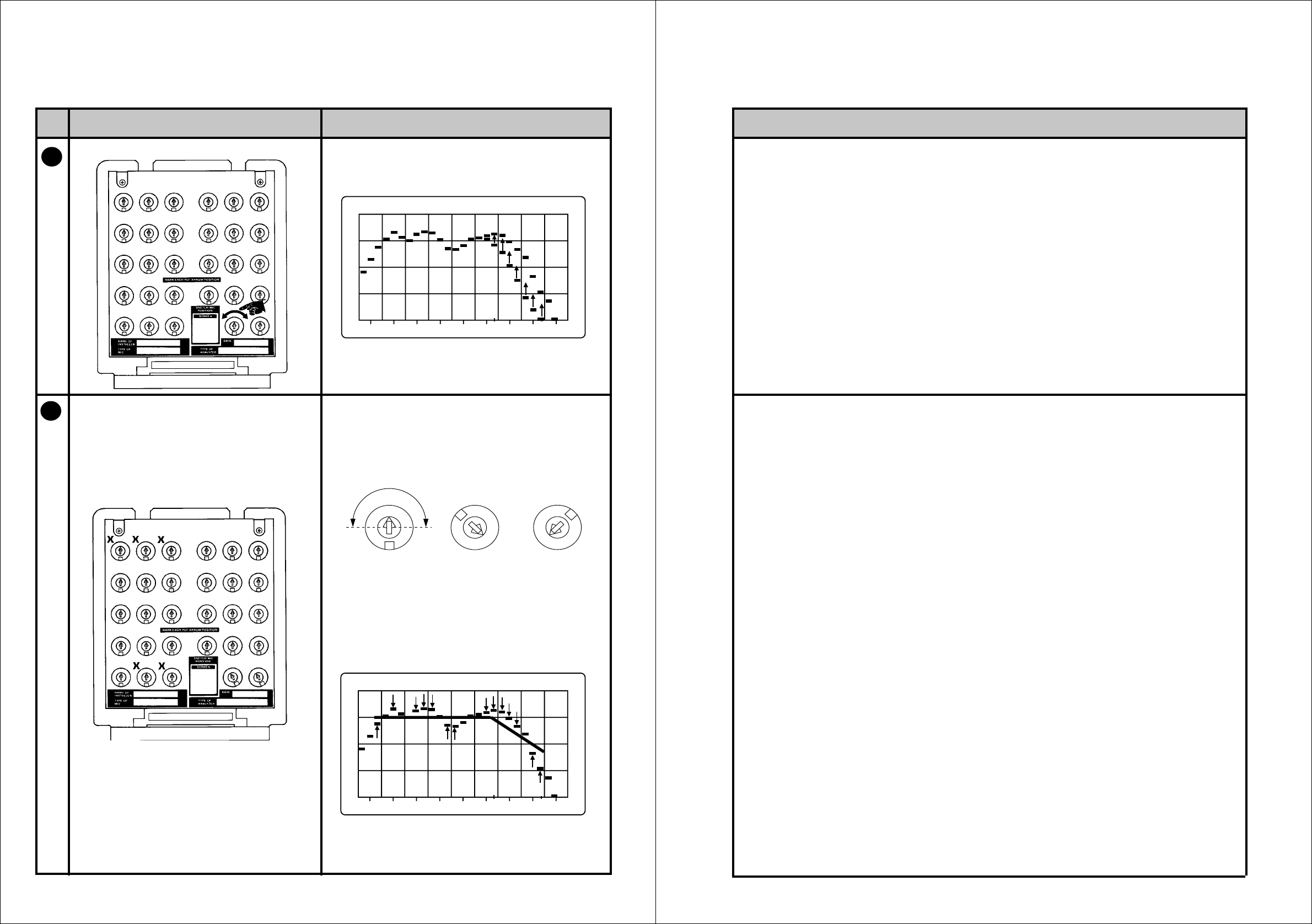
B-Chain Alignment Procedures
Action
Indication
Step
No.
5-14
a. Setting Room Equalization
.05
.1
.2
.4
.8
1.6
3.15
6.3 12.5 kHz
dB
–10
+5
0
–5
+10
2.0 8.0
.05
.1
.2
.4
.8
1.6
3.15
6.3 12.5 kHz
dB
–10
+5
0
–5
+10
2.0 8.0
16
✓
X
X
17
x
Do not adjust
B-Chain Alignment Procedures
Notes
5-15
a. Setting Room Equalization
While observing the frequency response curve on the RTA, adjust the treble control on
the Cat. No. 64 for a flat response as close as possible up to 2 kHz, followed by a 3 dB
per octave roll-off above 2 kHz (the frequency response specified in ISO Standard 2969).
Once you set this control, do not change the setting during the rest of the room equalization
procedure.
The next step is to fine-tune the equalization by adjusting the third-octave controls on the
Cat. No. 64 equalizer. There are certain rules to keep in mind:
• The object is to achieve the final adjustment of room equalization with all of the
controls as close to the 12 o’clock position as is possible.
• All of the equalizer controls interact with each other so you should not start at the
low end of the response curve and merely work your way to the high end. As each
control is adjusted, the response obtained by adjustment of adjacent controls is
affected.
• Start at the center frequency and attempt to achieve results with cut rather than
with boost. The desired curve is a flat frequency response up to 2 kHz,falling at
3 dB per octave to 8 kHz (1dB per third-octave band). Do not change the position
of the 50 Hz or 40 Hz band controls nor turn the controls for bands above 8 kHz
unless you have modern loudspeakers. This protects the loudspeakers and power
amplifiers from damage and prevents distortion of the reproduced sound.
• If modern woofer systems (vented-box direct radiator enclosures) are installed in
the theatre , moderate bass equalization down to 40 Hz may be used.
• Once an adjustment seems OK, work on the frequencies to either side of it. You
may find that a cut at one frequency is followed by a slight boost at adjacent
frequencies.
• Control settings should not fall outside the band between the 9 o’clock and the
3 o’clock positions.
• Avoid diametrically opposed adjacent control settings.
Adjust for the response that is closest to the curve shown. The diagrams show a typical
equalization procedure, from the response before equalization to the final equalization.


















